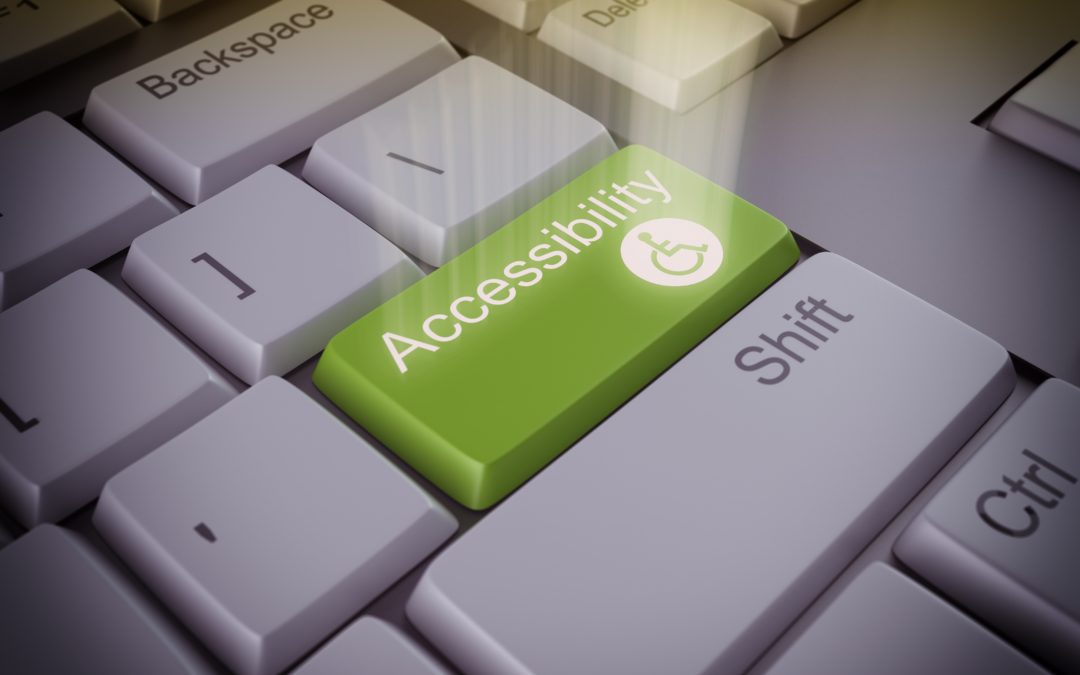What is web accessibility and why should we be talking about it? Simply put, it means that people of all abilities (including those with disabilities) can use your website. Web accessibility ensures that all users, no matter who they are or what devices they use, have a great user experience on the web.
Think of web accessibility as the digital equivalent to real-world accessibility solutions such as ramps, greater transportation options, Braille in elevators, sign language interpreters, and so on. For digital devices, these solutions include screen readers, voice recognition software, screen magnifiers, and alternative input devices. More than 285 million people worldwide are estimated to be visually impaired and 360 million people worldwide have disabling hearing loss – these are your donors, volunteers, and users of your services. And no constituent deserves to be ignored when it comes to your website.
There are internationally recognized guidelines in effect to help anyone with a website ensure it meets at least one of three levels of accessibility criteria. The Web Content Accessibility Guidelines 2.0 (WCAG), which have been in effect since 2008, covers a broad range of recommendations to improve accessibility of web content to a wider range of people with disabilities, from blindness and deafness to learning disabilities, cognitive limitations, and limited movement or speech disabilities, or combinations thereof. You may have already heard of many of them such as providing video captioning or transcripts, text alternatives, or audio recordings.
Nonprofits have a unique responsibility, and face unique risk, when it comes to web accessibility.
Many nonprofits have a mission to serve diverse audiences, and this includes providing easy access to educational materials and other services for those audiences. While that includes both children and adults with disabilities, it can also include seniors with age-related impairments.
Missions and social responsibility aside, there could be legal ramifications for organizations that don’t improve their web accessibility. While organizations’ legal responsibility is still unclear, the number of lawsuits related to accessibility claims against various business websites, including ToysRUs, Bank of America, and Netflix, among others, have been on the rise.
Get ready for some scary source material: The Americans with Disabilities Act, Title III, Public Accommodations and Commercial Facilities, implies web accessibility requirements, while the U.S. Department of Justice holds that there is a “pre-existing” obligation to make websites accessible, even though the DOJ won’t have any clear rules for at least another two years or so. The Section 508 of the U.S. Rehabilitation Act requires electronic and information technology be available to people with disabilities, including federal employees and members of the public. Section 504 applies to federal programs or organizations that receive federal funds to ensure people with disabilities receive equal access to those programs and services.
Whew, now that we are past that, let’s ask a simpler question. What does this mean for nonprofits?
Web accessibility is not going away; in fact, it’s becoming increasingly necessary, and in certain cases, required. Your organization should be thinking about this issue right now. By evaluating and improving your web accessibility, you can become an industry leader in this area—which comes with several benefits:
- You can reduce your risk of legal action.
- You can demonstrate corporate/organizational social responsibility, which is great PR, by the way.
- You can improve your search engine optimization.
- You can provide increased website usability, which leads to increased donor conversions.
- You can realize a potential increase in market share.
- Most important, you can better serve your constituents.
Next post, we’ll discuss the main principles of web accessibility and putting those principles into practice.

